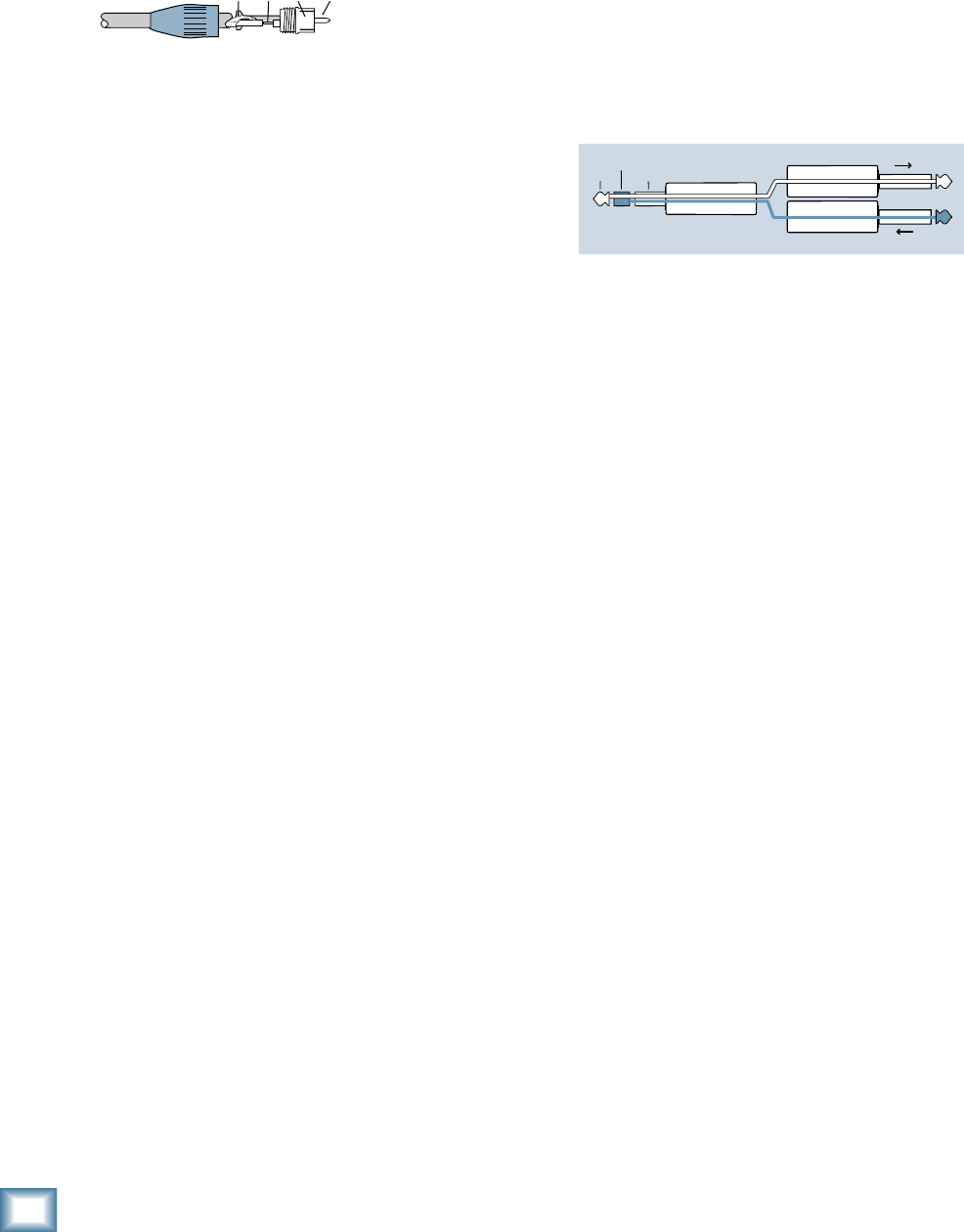
26
1642-VLZ3
1642-VLZ3
Special Mackie Connections
The balanced-to-unbalanced connection has been
anticipated in the wiring of Mackie jacks. A
1
⁄4" TS plug
inserted into a
1
⁄4" TRS balanced input, for example,
will automatically unbalance the input and make all the
right connections. Conversely, a
1
⁄4" TRS plug inserted
into a
1
⁄4" unbalanced input will automatically tie the
ring (low or cold) to ground (earth).
TRS Send/Receive Insert Jacks
Mackie’s single-jack inserts are the three- conductor,
TRS-type 1⁄4" phone. They are unbalanced, but have
both the mixer output (send) and the mixer input
(return) signals in one connector. See Figure E.
The sleeve is the common ground (earth) for both
signals. The send from the mixer to the external unit is
carried on the tip, and the return from the unit to the
mixer is on the ring.
Using the Send Only on an Insert Jack
If you insert a TS (mono) 1⁄4" plug only partially (to
the fi rst click) into a Mackie insert jack, the plug will
not activate the jack switch and will not open the insert
loop in the circuit (thereby allowing the channel signal
to continue on its merry way through the mixer).
This allows you to tap out the channel or bus signal
without interrupting normal operation.
If you push the 1⁄4" TS plug in to the second click, you
will open the jack switch and create a direct out, which
does interrupt the signal in that channel. See Figure F
on the next page.
NOTE: Do not overload or short-circuit the signal you
are tapping from the mixer. That will affect the internal
signal.
RCA Plugs and Jacks
RCA-type plugs (also known as phono plugs) and
jacks are often used in home stereo and video equip-
ment and in many other applications (Figure D). They
are unbalanced and electrically identical to a 1⁄4" TS
phone plug or jack. See Figure C. Connect the signal to
the center post and the ground (earth) or shield to the
surrounding “basket.”
Unbalancing a Line
In most studio, stage and sound reinforcement situ-
ations, there is a combination of balanced and unbal-
anced inputs and outputs on the various pieces of
equipment. This usually will not be a problem in making
connections.
• When connecting a balanced output to an
unbalanced input, be sure the signal high (hot)
connections are wired to each other, and that
the balanced signal low (cold) goes to the
ground (earth) connection at the unbalanced
input. In most cases, the balanced ground
(earth) will also be connected to the ground
(earth) at the unbalanced input. If there are
ground-loop problems, this connection may be
left disconnected at the balanced end.
• When connecting an unbalanced output to a
balanced input, be sure that the signal high
(hot) connections are wired to each other. The
unbalanced ground (earth) connection should
be wired to the low (cold) and the ground
(earth) connections of the balanced input. If
there are ground-loop problems, try connecting
the unbalanced ground (earth) connection only
to the input low (cold) connection, and leaving
the input ground (earth) connection discon-
nected.
• In some cases, you will have to make up special
adapters to interconnect your equipment. For
example, you may need a balanced XLR female
connected to an unbalanced 1⁄4" TS phone
plug.
TI
P
SLEEVETIPSLEEVE
Figure D: RCA Plug
“tip”
This plug connects to one of the
mixer’s Channel Insert jacks.
“ring”
tip
ring
sleeve
SEND to processor
RETURN from processor
(TRS plug)
Figure E


















